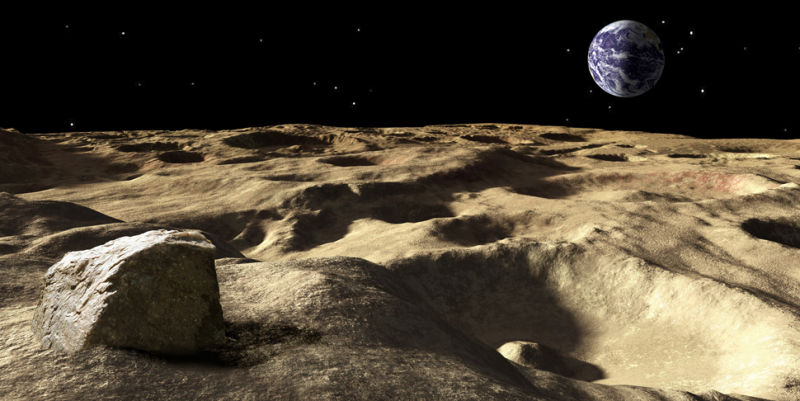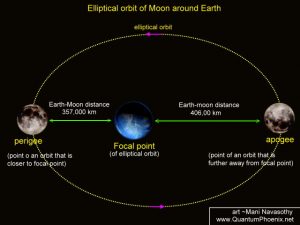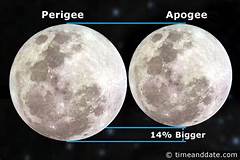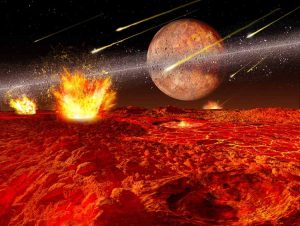
The elliptical orbit of our Moon brings it near to us each month. Perigee. And on the far side of the ellipses: Apogee.  Of course the Moon can roll by in Perigee when it is new or waxing or waning–or, when it is full. It seems very grand that the Moon was full the very day we set out on the new road of the year, 2018. January 1, 2018 was special since the Moon was not only full but close, very close. It visited us at what is called “extreme perigee distance”–only 221,559 miles away. The Moon won’t be this close to us again until November 25, 2034. The closest full moon of the 21st century will fall on December 6, 2052–so mark your calendars! link
Of course the Moon can roll by in Perigee when it is new or waxing or waning–or, when it is full. It seems very grand that the Moon was full the very day we set out on the new road of the year, 2018. January 1, 2018 was special since the Moon was not only full but close, very close. It visited us at what is called “extreme perigee distance”–only 221,559 miles away. The Moon won’t be this close to us again until November 25, 2034. The closest full moon of the 21st century will fall on December 6, 2052–so mark your calendars! link
Supermoon is the glamorous modern moniker for a full moon at perigee. Some scientists, skywatchers and news media say the difference between a full moon at perigee and one at apogee is not perceptible to the naked eye. Others tout the extra 30 % of brightness and the 14% difference in size.
moon at perigee. Some scientists, skywatchers and news media say the difference between a full moon at perigee and one at apogee is not perceptible to the naked eye. Others tout the extra 30 % of brightness and the 14% difference in size.
Such squabbling or scholarly writings, even poetry or pictures  don’t help us really “see” our Moon. We have to look at it first hand. And what we see is cold and bright with no hint of the Moon’s history of fire and violence described and illustrated by Ron Miller several years ago. link
don’t help us really “see” our Moon. We have to look at it first hand. And what we see is cold and bright with no hint of the Moon’s history of fire and violence described and illustrated by Ron Miller several years ago. link
Miller tells us that four and a half billion years ago a heavenly body the size of Mars hit the Earth. The ring of debris created by the impact circled the Earth and coalesced into the Moon. Asteroids then smashed into the molten cooling moon creating thousands of lava flows. Poor Moon.
 I love the illustrations here showing the turmoil. The illustration at the top of the page shows the current quiet, stark surface of a Moon that roiled with fire in the past. But no more.
I love the illustrations here showing the turmoil. The illustration at the top of the page shows the current quiet, stark surface of a Moon that roiled with fire in the past. But no more.
The Moon came this year with a punishing Arctic cold front. It was huge, dimmed by mist but it seemed pure to me, unsoiled by bloody battles or disease or death, lighting a new road that will hopefully be one of peace and health and good living. Happy New Year.
